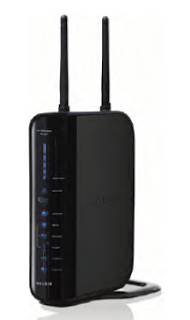Installing and configuring your router is the most complex and important
activity in setting up your home or office network. This device is used to
connect the entire home or work network to your Internet service provider.
Therefore, it must have the correct settings if it is to connect without
problems. Once the router setup is complete, you must configure the settings of
your home network so that all computers can connect to the router and the
Internet. Lastly, you need to enable the wireless capability and configure it
so that all notebooks and netbooks can connect to the home network. Configuring
the router depends a lot on the manufacturer and the specific model you have.
There is no universal method for configuring a router, as each producer uses a
different approach. Therefore, carefully read the user manual while going
through this procedure. While you progress through the configuration, pay
attention to the following details:
●● Internet WAN (Wide Area Network)
settings All of these
settings are obtained from your Internet service provider (ISP) and are used to
connect your home network to the Internet. You might need to contact your ISP to
gather information you need to configure your router’s connection to the
Internet.
●● Connection type What kind of connection will you be
using? The most common connection types are the following:
❍❍
Dynamic Your ISP will automatically assign an
IP address to the router. This IP address is based on the Media Access Control
(MAC) address of your router. A MAC address is a unique identifier used by most
network adapters for identification. The MAC address can be found in the
configuration screens of your router; it is composed using following format:
XX-XX-XX-XX-XX-XX. The MAC address can be formed only with letters and numbers.
One example is: 0A-19-5B-BC-D2-E1.
❍❍
Static IP address The ISP will assign a static IP
(Internet Protocol) address to your router. An IP Address is composed using the
following format: XXX-XXXXXX- XXX. The address is comprised only of numbers
(for example, 86-34-233-84). When such a connection is used, you need to know
the values for the IP Address, Subnet Mask, and Gateway Address. All these
details share the format of the IP Address—they are formed only from numbers
and can be given to you only by your ISP.
❍❍
Point-to-Point Protocol over Ethernet (PPPoE) This is generally used by telephone
companies that also provide Internet connections. PPPoE requires the ISP to
create a user name and password for you. You need to enter these details into
the router’s configuration screens. This information is used to “dial” the
connection to the servers of your ISP.
❍❍
Point-to-Point Tunneling Protocol (PPTP) Mostly used in Europe, this is another
type of connection that requires authentication through a user name and
password. It provides similar levels of security to typical virtual private
network products.
●● Domain
Name Server (DNS) A DNS has the function of translating the human readable domain names we
use for Web sites—for example, www.google.com —into the corresponding IP addresses
that are used by network devices. You will need two DNS addresses: a primary and
secondary. These addresses are the IP Addresses of two servers and you will
obtain this information only from your ISP.
●● Local
Area Network (LAN) Settings These settings are applied to your home network. Most routers come with
a predefined set of configurations. If this is the case with your router, go
ahead and use them. There is no need to change them, as they will work properly
right out of the box. The LAN settings define what kind of IP Addresses are
assigned to your home computers and whether they are assigned dynamically or
statically. For more information, consult the manual of your router and follow
the recommendations of the manufacturer.
●● Wireless
Settings These settings
are applied to all laptops or netbooks that access your home network via a
wireless connection. First, you need to enable the wireless capability. Here
there are a couple of details you should configure:
❍❍
Service Set Identifier (SSID) This is the name that will be
displayed when a laptop searches for wireless networks in your area. Here, it
is best to give it a recognizable name so that people in your home know that it
is your network. The name can contain letters, numbers, and underscores.
❍❍
Security Type This setting defines the
authentication and encryption methods (or lack of it) that are used to protect
your network. Your options include WPA2-PSK (best protection method, highly
recommended), WPA-PSK, WEP (very poor protection, easily cracked), or no
security, which means everybody can freely connect to your network. If you
select to enable any type of security, you must also type an access key (or
password). Make sure this key combines letters, numbers, and special characters
such as #, &, +, etc. Write this access key down, as you will need to know
it in order to establish a wireless connection to your home network.
Once the router is configured
correctly, make sure that all desktops are connected via cable and check if
your drivers are installed correctly.



{ 0 comments... read them below or add one }
Post a Comment